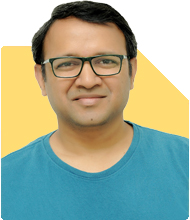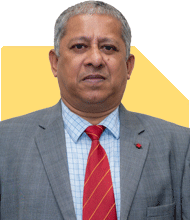
Dear Sir, hope you are doing well. I'm an IT professional of 37 year old. nearly 1.2 lakhs take home salary. And in which mostly I invest in PPF of 1.5 lakhs and have corpus of 10 lakhs and EPF ( company + my EPF and some % VPF all together) corpus as 12 lakhs . That is all my savings. I'm single earning person have kid of 11 year who studies in 6 std and wife home maker as direct dependents and also elderly parents one is with diabetic health issues so apart from company provided health insurance I have taken for them private medical insurance for which I have to pay for both 55k yearly and have taken term insurance for 1.5 cr. I have not invested in any mutual funds or stock as I have no idea. Mostly some times with govt I linked schemes like NSC and FD for shirt terms. But, considering my salary and expenses ( own house and have homeloan of 18 lakhs remaining , monthly expenses arround 45K excluding home loan and 2.3k for my term insurance) , my goals are now I have short time left to invest for my kids higher education and my retirement Corpus, and family dependency so had to looks after health insurance for all of us and with that savings for retirement ) please suggest good investment plans, budget planning and considering tight situation .
Ans: Personal and Financial Snapshot
Age?37, sole earning member
Take?home salary ~Rs?1.2?L/month
Dependents: wife, 11?year?old child, elderly parents
Health insurance via employer + private plan for parents costing Rs?55?k/year
Term insurance cover: Rs?1.5?Cr (premium Rs?2.3?k monthly)
Home loan outstanding: Rs?18?L
Monthly household expenses: Rs?45?k (excluding loan and insurance premium)
Savings: PPF investment Rs?1.5?L/year (corpus Rs?10?L); EPF/VPF corpus Rs?12?L
No mutual funds or equity investments; small amounts in NSC/FDs
Strengths of Your Financial Situation
Good salary with steady inflows
Regular savings via PPF/EPF
Medical cover for all dependents
Debt level modest and reducing
Awareness of protecting family via insurance
This is a solid base to begin disciplined goal?based investing.
Financial Goals Clarity
Child’s Higher Education
Child is 11, plan to fund education after ~7 years
Goal need: college fees, possibly higher study abroad
Retirement Corpus
At least 15–20 years of additional earnings
You wish financial independence, not dependency
Family Health Security
With ageing parents and ongoing health concerns
Budget into savings for medical larger expenses
Home Loan Pay?Off
Eliminating debt frees up future cash flows
Major Challenges Identified
No exposure to higher?return investments like equity
Entire savings in low?growth debt instruments
Moderate insurance cover but rising future health costs
Home loan repayment exhausts surplus cash flow
Lack of systematic investment towards long?term goals
Action Plan Overview
Budget and Cash Flow Restructuring
Emergency Fund Creation
Prioritised Debt Repayment Strategy
Goal?Based Investment Strategy
Insurance Plan Review and Top?Up
Implementation of Equity Exposure via Mutual Funds
Through actively managed regular plans
Regular Review and Rebalancing
Tax Efficiency and Compliance
Let us analyse each step in detail.
1. Budget and Cash Flow Restructuring
Assessment:
Total gross inflow ~Rs?1.2?L/month
Outflows: Rs?45?k expenses + Rs?(18?L loan EMI) / say 240 months ~ Rs?7.5?k/month? Assuming 18?L over 15 years but better calculate EMI accurately. For planning, use ~Rs?10?k/month
Insurance premium Rs?2.3?k + parents’ health ~ Rs?4.6?k/month
PPF outflow Rs?12.5?k/month
Revised monthly flow (approx.):
Inflow: Rs?1,20,000
Living expenses: Rs?45,000
Home loan EMI: Rs?10,000 (estimated)
PPF investment: Rs?12,500
Insurance premia: Rs?6,900
Total outflow: Rs?74,400
Surplus cash: Rs?45,600
This surplus is your potential investment/loan repayment buffer. Use it wisely.
2. Emergency Fund Creation
Maintain 6–12 months of living expenses for safety.
Living outflow ~Rs?65–70?k/month
Aim to secure Rs?4–8?L in liquid or ultra?short term debt funds
This replaces parking money in FDs or NSCs if used
Keep the corpus flexible for urgent needs
Action Steps:
Allocate Rs?10?k/month from surplus to build this in 8 months
Use short?term debt funds or liquid funds for moderate returns
3. Home Loan Pre?payment & Restructuring
Outstanding Rs?18?L at likely moderate interest rate
Pre?paying accelerates loan closure and saves interest
Application led by surplus or reallocation later
Post EF savings, direct surplus monthly into loan repayment
Reduces EMIs and increases savings cushion
Avoid increasing loan tenure; instead reduce principal sooner.
4. Goal?Based Investment Strategy
Your surplus ~Rs?45?k/month after mandatory outflows
Priorities:
Emergency fund
Child’s fund in 7 years
Retirement corpus in 20–25 years
Health cost buffer as parents age
Gradual equity exposure to grow corpus
| Goal | Timeline | Monthly Allocation | Asset Mix |
| ------------------- | ---------- | -------------------- | ---------------------------------------- |
| Emergency Fund | 0–9 months | Rs?10?k | Liquid Funds |
| Child’s Education | 7 years | Rs?15?k (ramping up) | Actively managed equity + hybrid via STP |
| Retirement Corpus | 20+ years | Rs?10?k | Actively managed equity funds |
| Health / Parents | Ongoing | Rs?5?k | Debt or hybrid funds |
| Home Loan Repayment | Next 3 yrs | Rs?5–10?k (post EF) | Prepayment |
This utilises the Rs?45?k effectively with clear purpose.
5. Insurance Review and Top?Up
Term cover Rs?1.5?Cr secures family income
Parents have medical cover of Rs?55?k/year
Consider increasing cover or adding critical illness rider
Children covered under family floater; ensure they have future cover
Insurance is for risk transfer; don’t use as investment tool.
6. Introduce Equity via Mutual Funds
Why equity? Long horizon goals benefit from equity growth potentials.
Mutual Fund Routes:
Avoid index funds – they do not shield downside or explore excess returns
Prefer actively managed mutual funds via regular route through CFP and MFD
Direct plans lack ongoing guidance and monitoring
They don’t offer automatic fund review, rebalancing, switching
Recommended Approach:
Equity Funds: Rs?25–30?k/month via regular SIPs
Hybrid Funds: Rs?10?k/month (for child goal)
Debt Allocation: Rs?10?k/month for stability
Start small and scale up as surplus builds
7. Debt & Hybrid Funds for Stability
Your short?term goals and health needs require stability.
Use balanced or hybrid funds for moderately safe returns
Once child goal is nearer, shift hybrid investments to safer instruments
Use STP from equity to hybrid when needed
Avoid locking entire portfolio in fixed interest FDs or NSCs; benefits are limited post?tax.
8. Systematic Use of Plot / One-Time Funds
If a plot is sold or lump sum funds become available:
First ensure emergency corpus is sufficient
Then allocate 60–70% to equity funds and 30–40% to hybrid/debt goals
Use phased investment if market volatility is present
Avoid channeling lumpsum into risky debt instruments
9. Tax Efficiency and Compliance
Follow new mutual fund taxation:
Equity: LTCG taxed @12.5% above Rs?1.25?L/year, STCG @20%
Debt: Taxed per marginal slab with no indexation on LTCG
Strategize redemptions to stay within tax-free bracket
PPF and EPF income is tax-exempt; good for fixed return
Use Section 80C limits; invest max permissible
File tax returns timely, report all gains
10. Future Portfolio Rebalancing
Periodically (6–12 months) align asset mix with goals
Shift equity to debt as children’s education nears
Increase SIPs when your home loan EMI reduces or salary increases
Adjust health allocation as parents age or coverage changes
Monitor and rebalance sequence of funds, staying aligned
11. Spousal Income Uncertainty Planning
Even though your spouse’s earnings are uncertain:
Keep solid emergency reserves
Consider portable investment vehicles in spouse’s name
Keep joint investment view for flexibility
Use term cover to protect in case of income loss
12. Discipline, Monitoring & Professional Support
Discipline in investing via SIP and loan repayment is essential
Avoid impulsive fund transfers based on market movement
Use CFP-led guidance to rebalance and adjust
Keep regular reviews every 6 months
Update goals, allocations, and insurance reviews
Final Insights
Your financial base is stable but can be better optimised
Introduce goal?based equity exposure via actively managed regular plans
Build emergency cushion and prepay loan to reduce debt
Use mutual funds to generate mid- and long?term corpus
Rebalance regularly and stay tax?efficient
Update insurance over time, especially health and parents’ cover
Engage CFP guidance to refine and monitor ongoing strategy
With disciplined allocation and professional oversight, you can reach your child's education funding, secure parents' health needs, retire comfortably while working on your own terms.
Best Regards,
K.?Ramalingam, MBA, CFP,
Chief Financial Planner,
www.holisticinvestment.in
https://www.youtube.com/@HolisticInvestment



















